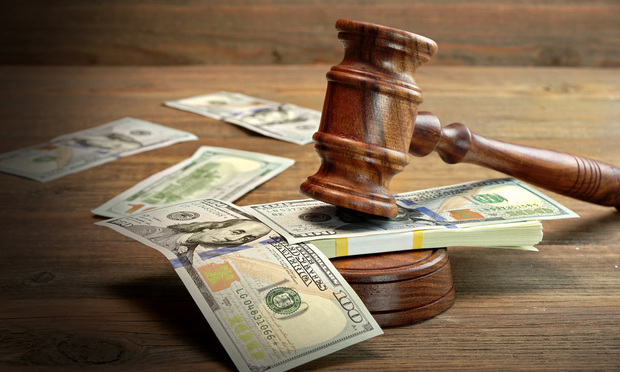U.S. lawsuit costs rose 2.1 percent in 2007, will jump 4 percent this year and the sour economy will push the upward trend through 2010, according to a study by Towers Perrin consulting firm.
Last year's increase was attributed to a rise in personal injury cases mostly from automobile accidents--the first increase since 1999. The auto property damage frequency index, based on insurance industry figures, was 0.897 last year compared with 0.891 for 2006.
The "2008 Update on U.S. Tort Cost Trends" from Towers Perrin reported that a $5.1 billion climb from tort costs in 2006 marks the first escalation since 2005 and follows a 5.6 percent decline in 2006.
Further, Towers Perrin said it estimates that U.S. tort costs will increase 4 percent in 2008 and an additional 5 percent in both 2009 and 2010.
It said this is due to the continuing fallout of the 2007 subprime mortgage debacle and the current global financial crisis--as well as such factors as the impact of ever changing fuel prices on personal auto liability costs and the potential for increased activity in the area of employment practices liability, the company said.
"The current global economic climate could very well lead to a surge in tort activity here in the U.S," Russ Sutter, a Towers Perrin principal and author of the report said in a statement.
"For 2008 and beyond, we see the list of potential defendants growing to groups such as mortgage brokers, appraisers and investment banks, as well as peripheral defendants, such as auditing firms and attorneys advising the targeted firms," said Mr. Sutter
He continued that the implosion and "resulting government involvement in firms such as Bear Stearns, Lehman Brothers, Fannie Mae and AIG will undoubtedly lead to further litigation in 2008 and 2009," noting that, "What remains unclear is how many dollars will change hands as a consequence of this litigation."
From a statistical standpoint, the U.S. tort system cost $252 billion in 2007, or $835 per person--$9 per person more than in 2006. The 2008 report analyzes U.S. tort costs from 1950 through 2007, with projections through 2010.
The methodology used in the study incorporates three cost components: benefits paid or expected to be paid to third parties (losses), defense costs and administrative expenses, Towers Perrin said.
Administrative expenses are identified separately in the report.
Key findings:
o Overall economic growth in 2007 was 4.8 percent. As such, the ratio of tort costs to gross domestic product (GDP) shrank in 2007, marking four consecutive years of a decline in the ratio. Since 1950, growth in tort costs has exceeded growth in GDP by an average of approximately two percentage points.
o The total tort costs from commercial lines in 2007 increased 1 percent over 2006. The 2007 costs, however, were below levels seen each year in 2003 through 2005. The reduction from those prior years appears to be attributable to a reduction in the number of claims, according to the report.
o The smaller increase in commercial tort costs can be attributed in part to asbestos. Insured asbestos losses increased approximately $1.2 billion in 2007. This was lower than the comparable increases in 2004, 2005 and 2006 ($7.3 billion, $7 billion and $1.8 billion, respectively).
Towers Perrin said it is forecasting growth in U.S. tort costs of 4 percent in 2008, with higher growth (5 percent) in 2009 and 2010.
According to the report, several issues will determine the future trends in U.S. tort costs, including:
oGasoline prices -- Increases in the price of gasoline have resulted in a decrease in miles driven in 2008. Whether the price of gas increases further, and whether the public's reaction to the price is a temporary or permanent shift in driving habits will impact future personal auto liability costs.
o Credit crunch -- Springing from the subprime mortgage crisis in 2007 and continuing through 2008, the survey found the credit crisis has led to significant litigation activity, particularly on a class action level. As of year-end 2007, most of this activity was in the directors and officers area.
For 2008 and beyond, the firm said it sees the list of potential defendants growing to groups such as mortgage brokers, appraisers and investment banks, as well as peripheral defendants such as auditing firms and attorneys advising the targeted firms.
Medical malpractice legal claims costs, according to the report, have decreased in inflation-adjusted dollars since 2004. Tort reforms in several states have contributed to this result. It was noted that some of those reforms, however, such as in Illinois and Georgia, have been overturned or are currently being challenged in the courts.
In addition, the growing emphasis on "never events" (serious and costly errors in the provision of health care that should never happen, such as surgery on the wrong body part or a mismatched blood transfusion), and the potential strict liability that hospitals face from such claims, could change the recent trends, according to the report.
Want to continue reading?
Become a Free PropertyCasualty360 Digital Reader
Your access to unlimited PropertyCasualty360 content isn’t changing.
Once you are an ALM digital member, you’ll receive:
- Breaking insurance news and analysis, on-site and via our newsletters and custom alerts
- Weekly Insurance Speak podcast featuring exclusive interviews with industry leaders
- Educational webcasts, white papers, and ebooks from industry thought leaders
- Critical converage of the employee benefits and financial advisory markets on our other ALM sites, BenefitsPRO and ThinkAdvisor
Already have an account? Sign In Now
© 2024 ALM Global, LLC, All Rights Reserved. Request academic re-use from www.copyright.com. All other uses, submit a request to [email protected]. For more information visit Asset & Logo Licensing.








